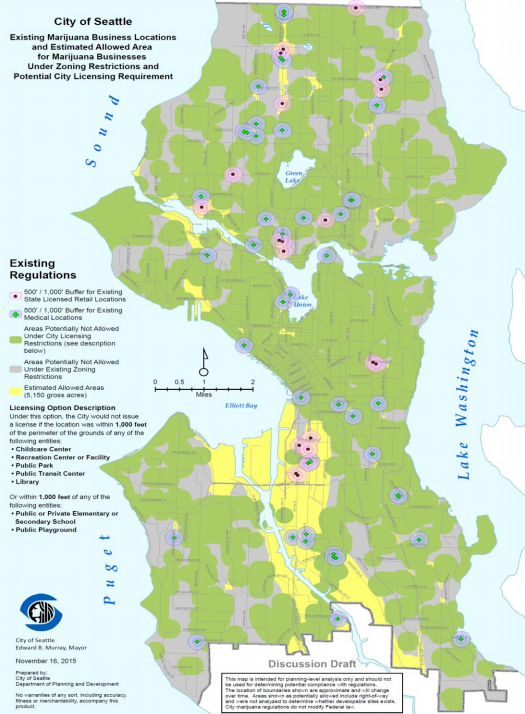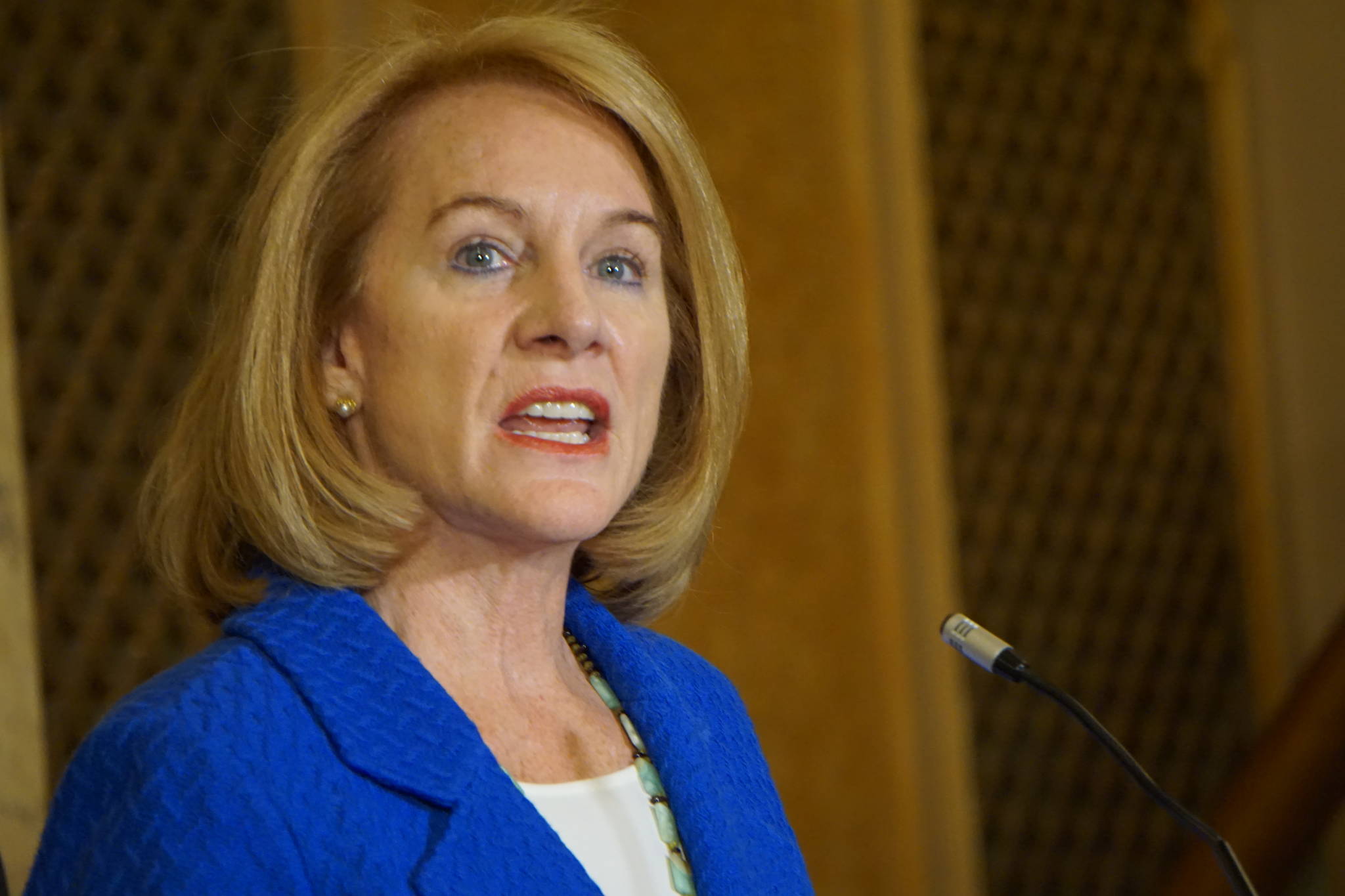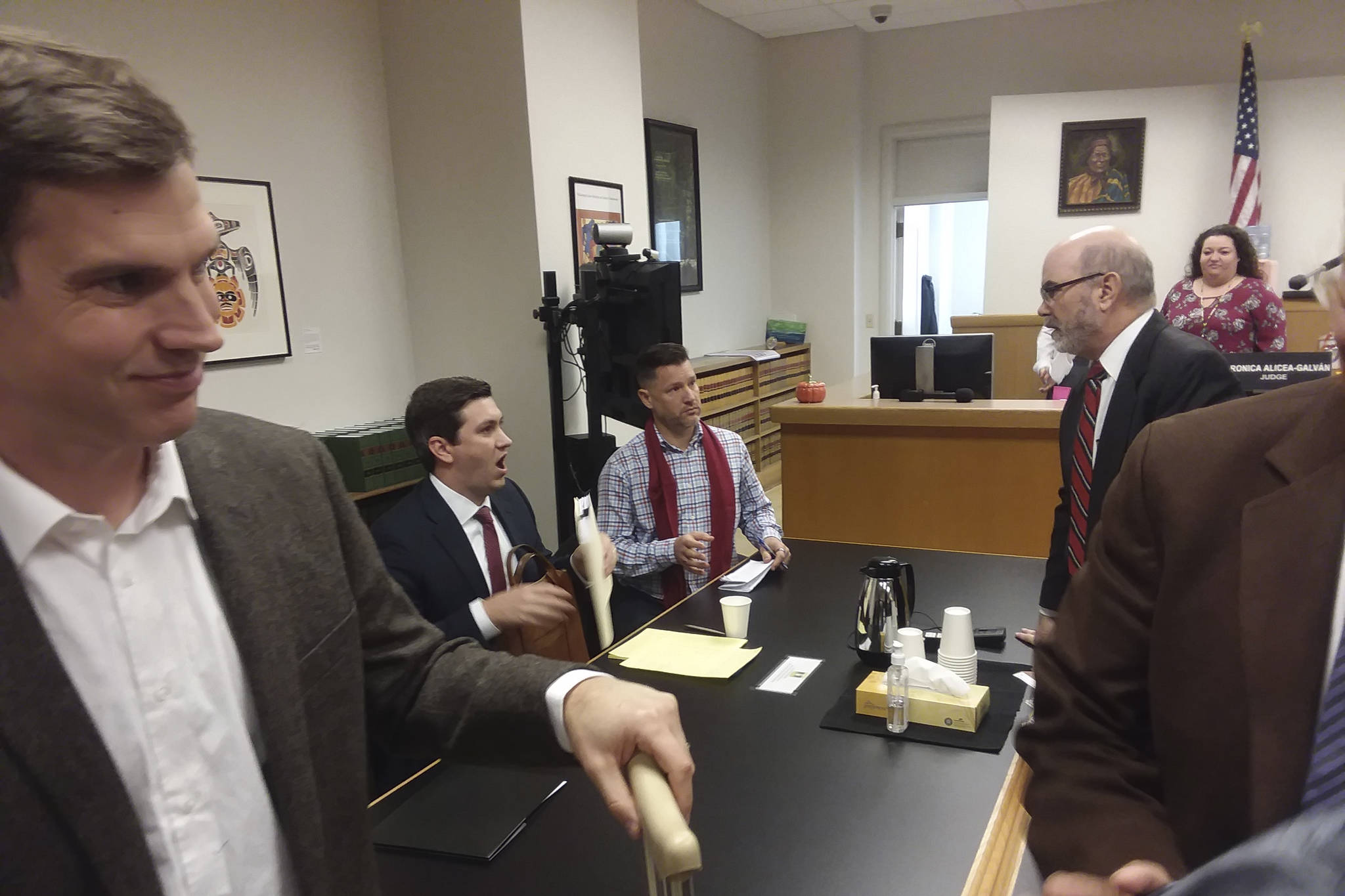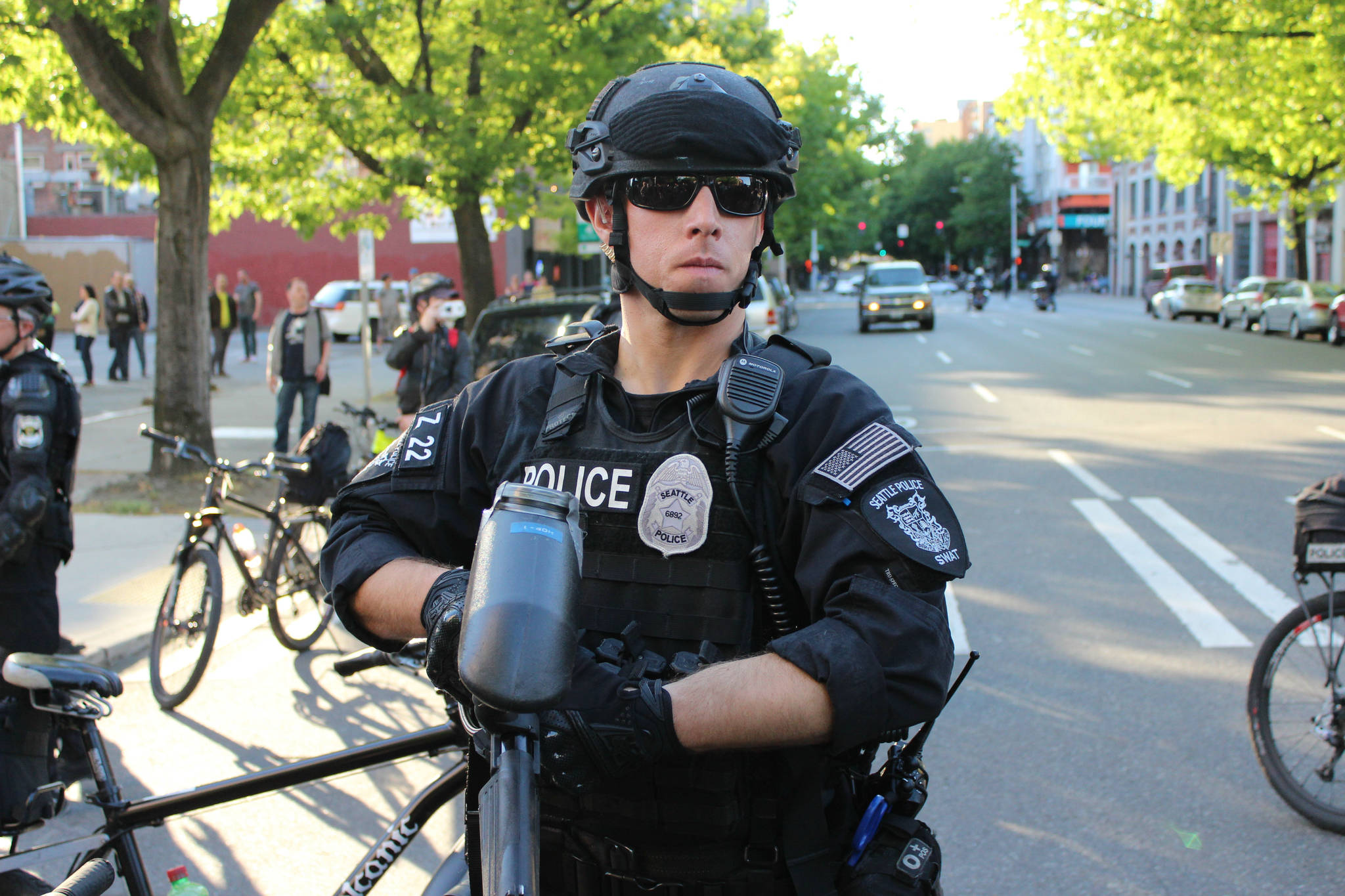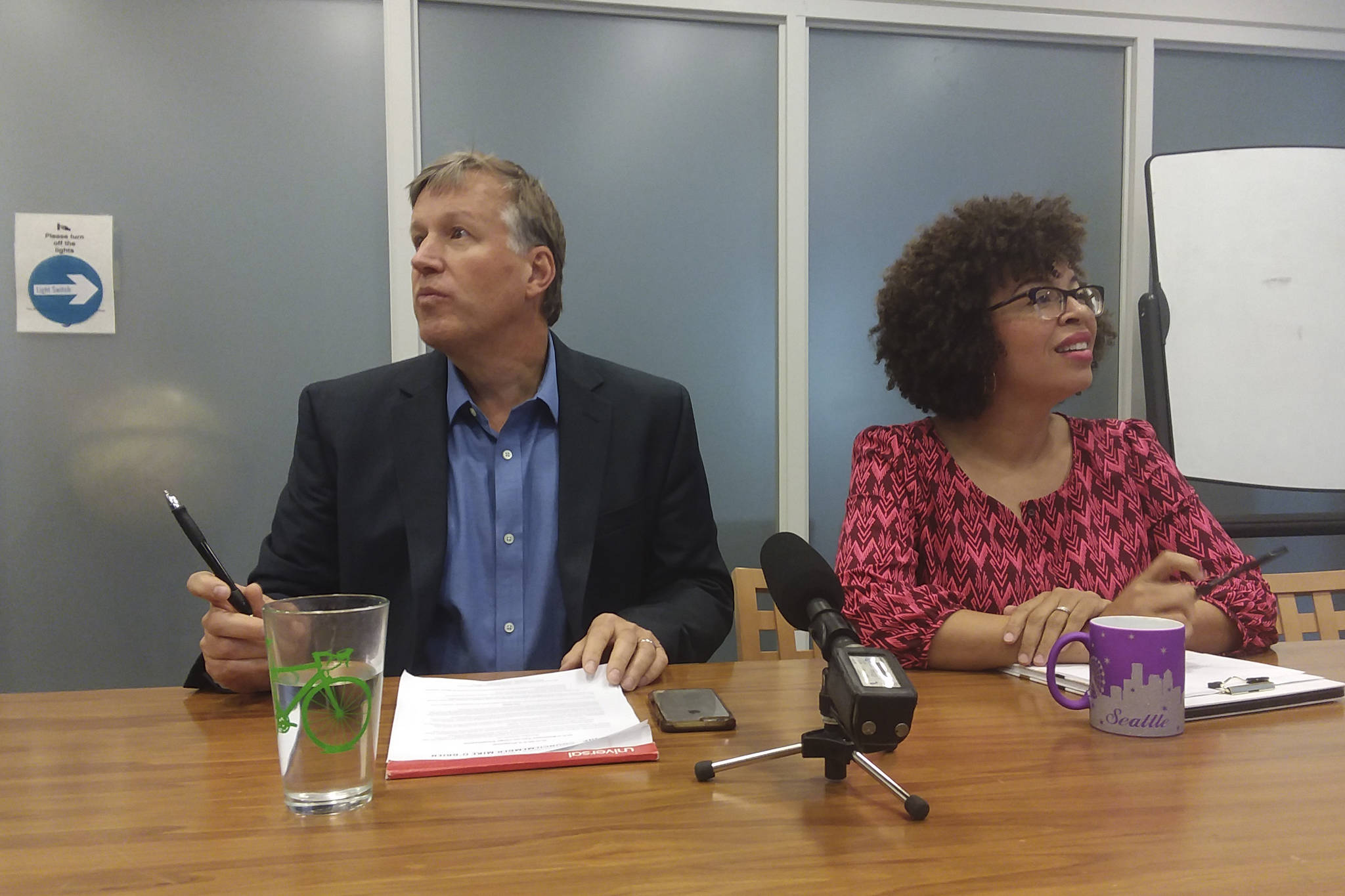You’re a consumer. Maybe you like to get stoned with friends on the weekend, or maybe your sister smokes CBD cannabis to tamp down her anxiety. You don’t want to have to bus across the city just to buy a legal joint, so it would be nice if Seattle let a respectable weed store open near your home.
But you’re also a parent, or neighbor, and you don’t want your neck of Seattle to become a gaudy strip of door-to-door pot shops haunted by shadey, red-eyed characters who reek of ganja and are discomfortingly friendly with your teenage nephew. So it would be nice if Seattle just kept weed stores where they are, out of sight and mind.
This is the dilemma policy makers face: how to make legal pot shops conveniently available to everyone without forcing their presence on anyone. In other words, accessibility without clustering.
That’s why the City Council will vote this afternoon on a bill initiated by the mayor’s office that would lower the distance requirements for legal pot stores. Right now, legal pot stores have to be 1000 feet from schools, playgrounds, child care centers, game arcades, libraries, parks, transit centers, and recreation centers. The bill would keep the 1000 foot rule for schools and playgrounds but lower the distance to 500 feet for the other types of sensitive locations. It would also require legal pot stores to be 350 feet away from each other; currently, there is no distance required between stores.
The goal here to is to avoid clustering. The 1000 foot requirement means that there are only a few areas in the city where pot stores can legally open. That causes pot stores to cluster in the few areas where they’re allowed, while the rest of the city has no convenient access to Mary Jane. Hopefully, lowering the distance requirements will open up new areas for pot stores to locate, allowing them to more evenly disperse throughout the city.
This strategy of spreading out pot shops by lowering distance requirements has its detractors. In December, when the council’s land use committee approved the bill that the full council will vote on today, councilmember Bruce Harrell was the sole dissenting vote. He justified his opposition with a process argument:
You can’t undo this, you can’t un-ring this bell…We are changing the fabric and the DNA of this city and these neighborhoods by making this policy decision [to lower distance requirements for pot shops] in the 11th hour here this year. And I would suggest that we go to the neighborhoods and have their input. These are not necessarily NIMBY people. These are people that are concerned about the impacts that we just don’t know because this is unprecedented.
Today’s bill has a slew of proposed amendments tweaking the distance requirements, but the one that’s most likely to pass comes from councilmembers Tim Burgess and M. Lorena Gonzalez. They want to allow up to two pot stores within a thousand foot area, rather than requiring 350 feet between pot stores.
Check out the maps at the top of this post to see how more spaces open up as the distance requirements decrease. The yellow areas are where pot stores are allowed.
